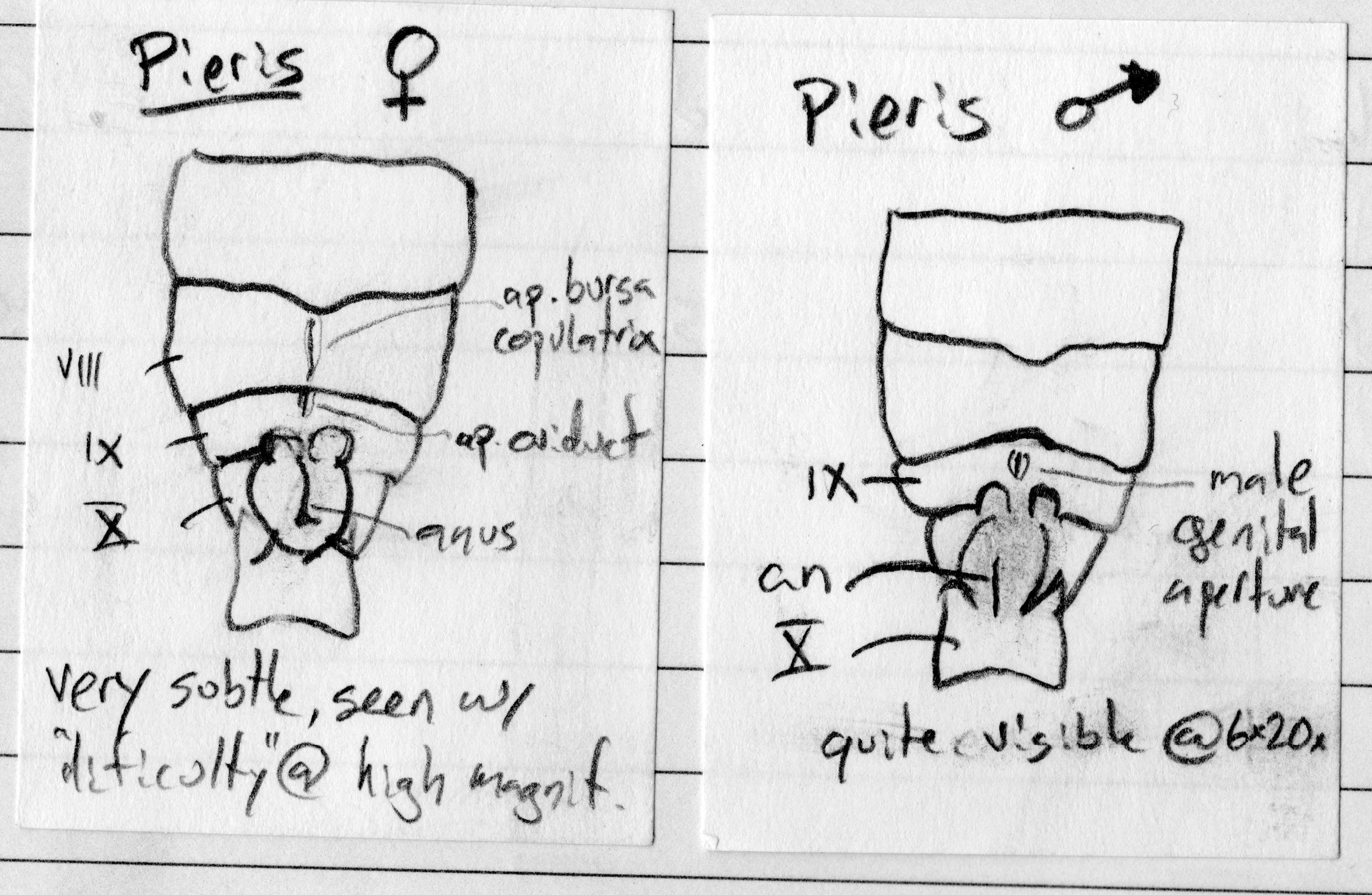two 3-liter Erlenmeyer flasks, with 1.7 liters of distilled water
one 1-liter beaker
two pairs of forceps
one pair of metal scissors
three sheets of paper towels
Scissores, forceps and towels are individually wrapped in foil
Tops of flasks and beaker are covered in foil
1. Parafilm strips with eggs are soaked in one liter of 10% formalin
for one-two hours.
3. Formalin is stored and eggs are briefly immersed in sterile water.
4. Parafilm strips are covered completly with sterile water for 10
minutes.
5. This rinse is repeated twice more for a total of 30 minutes.
6. Eggs are dried on sterile paper towels in a laminar flow hood for
30-45 minutes.
Pre-mix ingredients 12 cups (240-320 eggs/ 120-240 pupae)
Wheat Germ 120.0
g
Casein
34.0 g
Vitamin Premix 10.0 g
Salt
mix
8.0 g
Sorbic Acid
2.0 g
Methyl Paraben 1.0
g
Aureomycin
0.5 g
5. Add agar-water to blender, mix with wooden spoon, and blend until
homogeneous.
6. Pour diet into container while hot (80-100ml per container).
7. Cover containers with paper towels and allow them to cool for 2
hours.
Cooled diet can be stored, covered and sealed, at 5-7(C for at least
a week.
8. Cut parafilm strips (with 20-30 eggs per 16 oz. cup of diet for
10-20 pupae) and place on medium .
9. Cover cups with vented lids. Label cups with date eggs were added.
Store cups on their sides.
(Larval diet ingredients can be purchased from Bio-Serv, Inc. Tel:
908-996-2155).

| Feeding flask preparation:
250ml Erelenmeyer flasks are filled with 125ml of solution. Three dental wicks 25cm length are placed into flask. Feeding flask tops are lined with aluminum foil and autoclaved for 20 minutes. After cooling, foil is removed and wicks are secured with parafilm strip streched around top of flask. |
(Absorbal dental wick, available from Mohawk Dental Supply, Tel:315-437-2255)
4. A few days after emergence, female butterflies will be ready to oviposit.
Oviposition cup preparation:
A cabbage or broccoli leaf
is secured with a rubber-band covering the top of a water-filled 100-ml
beaker.
A parafilm strip is taped
around the top of beaker covering edges of leaf. Females will be stimulated
to oviposit by leaf, curl their abdomen and deposit egg on parafilm.